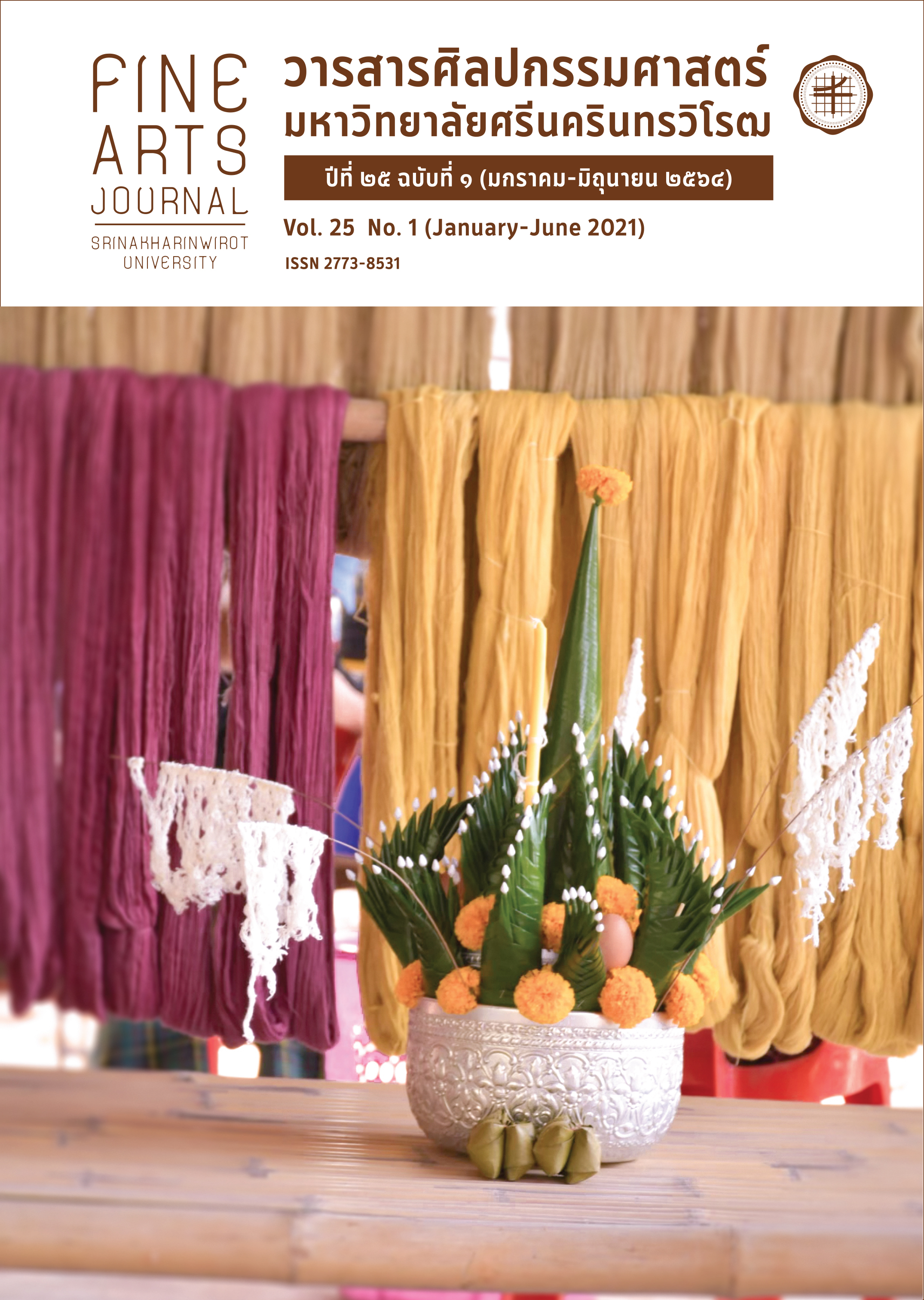THE STUDY OF THAI MUSIC FOR THE SHADOW PLAY IN KHUAN KHANUN DISTRICT, PHATTHALUNG PROVINCE
Keywords:
Nang Talung (Shadow play), Music composition, Ethnomusicological methodAbstract
The purpose of this research is to analyze the music culture expressed through music used for the performance of the shadow play in Khuan Khanun District, Phatthalung Province, in terms of melody, rhythm, musical component, and musical instruments. The research is qualitative research employing the ethnomusicological theory based on the PR. Model as its data collection methods. The findings show that the shadow play music has been sustainably survived because of its strong bond with traditional culture. The traditions and cultures expressed through the music of the shadow play has been involved in many rituals including appropriate processes and timing. The shadow performance and music can enhance people’s faiths and believes, as well as solving their certain living condition problems of the society. The popular musical instruments are Ching, Mong, Glong, Thab, Pi, and So, and the only one melody is presented with its rhythmic patterns corresponding to the key of music. The variety of rhythmic patterns based on the beat of Glong Tuk and Na Tub. The movements in the composition are designed independently according to each performer’s preference, not a strict form of musical theory. The important features or signature in the performance are Pi (Thai flute)’s ad-lib, color of each instrument, improvisation skill, and the unique style of each individual musician.
Downloads
References
กวีทัศน์ อะโสต. (2560). ดนตรีสำหรับการแสดงหนังตะลุง คณะครูบุญส่ง ไกรเดช จังหวัดระยอง. กรุงเทพมหานคร: สำนัก
พิมพ์แห่งจุฬาลงกรณ์มหาวิทยาลัย.
ชวน เพชรแก้ว. (2529). วรรณกรรมหนังตะลุง. สุราษฎร์ธานี: คณะมนุษยศาสตร์และสังคมศาสตร์ วิทยาลัยครูสุราษฎร์ธานี.
ปัญญา รุ่งเรือง. (2546). ประวัติการดนตรีไทย. กรุงเทพมหานคร: ไทย วัฒนาพานิช.
สุจิตรา มาถาวร. (2542). หนังใหญ่และหนังตะลุง. กรุงเทพมหานคร: เอส.ที.พี.เวิลด์มีเดีย.
Dowsey-Magog, P. (2002). Popular workers' shadow theatre in Thailand. Asian Theatre Journal, 19(1), 184-
Retrieved October 11, 2020 from http://www.jstor.org/stable/1124419






